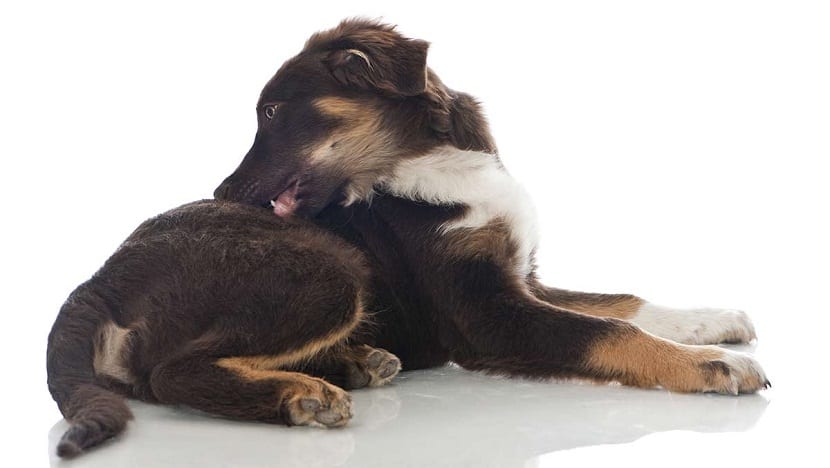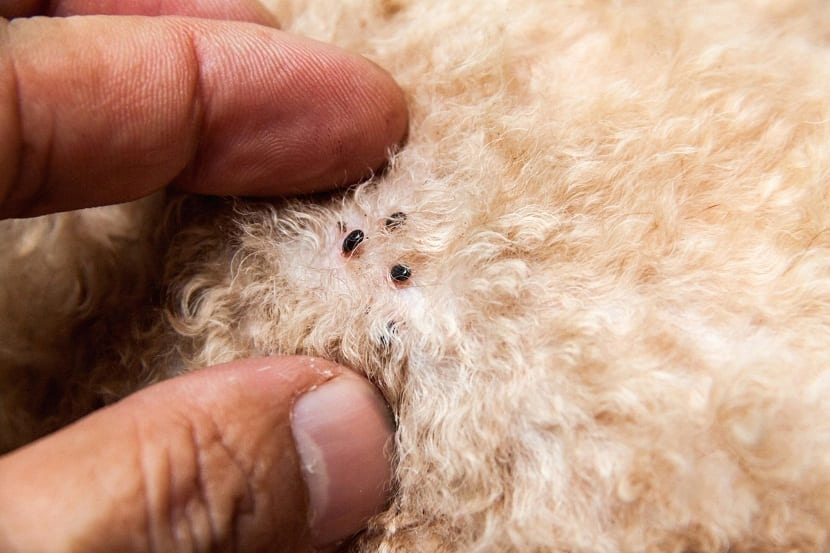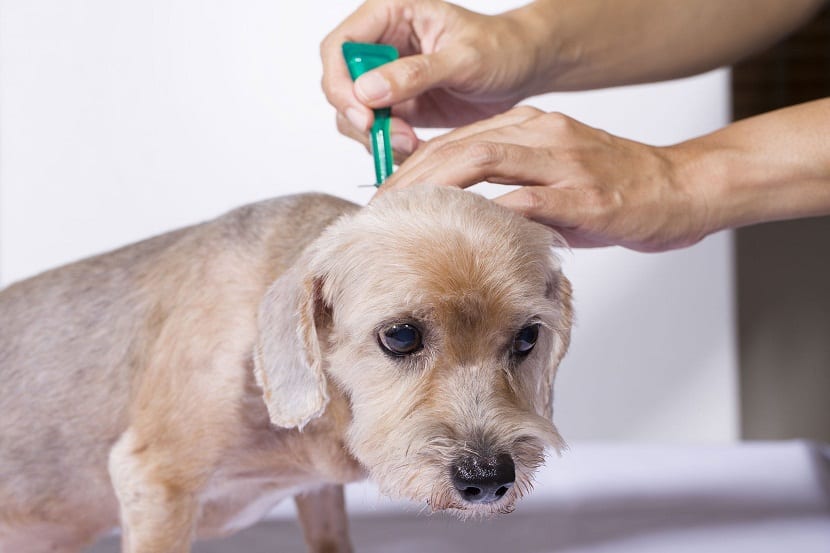
Having a dog as a pet represents being the protagonist of a very unique experience. The relationship and bond that is generated between the dog and its owner is decisive for life. Much of people's affection for these is accompanied by the responsibility, attention and care that should be taken.
Homes become the pet's environment and primary habitat. That is why it is very important that responsible owners consider the hygiene, cleanliness and health habits to be followed. These sanitary customs have a direct impact on the health of the pet and other members of the family.
Consequences of flea bites on dogs

Maintaining clean and disinfected the surfaces where the dog moves, resting place and a periodic control with the veterinarian will prevent it from suffering from at some point pesky parasites that compromise your health, as is the case with fleas.
In some cases, even these parasites carry terrible allergies to dogs.
Among the care that should be taken with pets is that of prevent them from becoming infected with fleas, as this insect is quite annoying and causes itchy canine skin.
Some dogs can suffer serious complications caused by allergies to the saliva of this insect. The area where the flea problem occurs frequently is on the Mediterranean coast.
This canine condition is known as Allergic dermatitis flea bite and is caused by showing excessive sensitivity to the insect's saliva. There is a greater risk of contracting the parasite in warm times such as spring and summer and during the cold season the insect is dormant in the cocoon.
The fact that the pet is infected with fleas does not mean that it is necessarily allergic. If the dog suffers from this condition, a weekly bite will suffice for it to have strong side effects that can become perennial.
Otherwise, the bites can be identified because in certain areas of the dog you can see small red marks, even also insects will look like black dots on fur or on the skin that jump quickly.
The age at which flea allergies are evident in dogs is after their first birthday to three.
How to eliminate fleas?
For the luckiest pets, the bite of this parasite is nothing more than an uncomfortable nuisance. Of course this does not mean that they should not be eradicated anyway, since this tiny insect is an effective transmitter of disease that have left a very bad memory in the collective memory of humanity.
Not all fleas are the same siphonaptera are tiny insects that do not exceed three millimetersbut they can jump two hundred times their body size. That is, 18 to 30 centimeters long enough to move victim easily.
Its genetic conditions make it adaptable to the warm environments of the interiors of buildings. Its outer layer is quite resistant and it has tiny hairs that make it easy to move through the fur of the animal they inhabit.
A female flea can lay up to twenty eggs a day, about six hundred for their life cycle and all with a high survival rate.
In the larval stage they do not inhabit any animals and have a extraordinary system that allows them to determine the opportune moment to inhabit an organism that provides them with their vital food, the blood.
There are many types of fleasAnd although the one carried by the rat that transmitted the black plague that decimated the European population is more easily remembered, the truth is that not all of them are so lethal.
However if they transmit diseases to humans as well as dogs. It is best to prevent this parasite from being caught by pets and taking it into the home.
Symptom

The reasons why a dog manifests allergies are the same for which any living being would have them, this being poor functioning of the immune system which makes it sensitive to flea saliva.
This offers an annoying itch much more intense than that of a common bite. Of course the pet will start scratching with such frequency and intensity that there is a high possibility of skin injury.
The affected area of the canine anatomy will redden and the skin will dry out, this will make it easier for the dermis to be injured and it does not heal easily due to the continuous stimulation of itching and dryness.
In extreme cases if not treated promptly can cause canine alopecia. It is very important to make an exact diagnosis to know if it is really an allergy since the condition can easily be confused with other diseases.
Tips and recommendations
If the dog has been found to have fleas immediate steps must be taken to eradicate them. Nothing is gained by eliminating fleas from the animal without subjecting the house to an exhaustive cleaning and vice versa, so you must work simultaneously on cleaning the house and the pet.
Start by visiting the vet and following their instructions regarding possible dewormers. There are many alternatives that can be used depending on the breed, age and peculiarities of the animal.
The treatment begins and begins a general cleaning of the entire environment of the pet, both interior and exterior.
The vacuum cleaner is a great ally because it will not leave eggs or larvae in cracks in walls and floors. Use an organic or chemical insecticide based on personal preference.
An interesting fact is that citrus scents are quite repellent to fleas and especially lemon, so you can make a disinfectant using natural ingredients or buy one with this smell.
Clean in great detail all surfaces of fabrics and upholstery, wash towels and blankets and dog items very well with hot water. The pet should be bathed regularly and apply flea treatments. A repellent collar is also an excellent strategy.

The dog needs daily exercise so it is not recommended that you lock it up during hot seasons, which is where they tend to get fleas most. What should be done is to continue the treatment and take preventive measures.
An interesting tip is plant plants that attract nematodes and ladybugs in the garden, since these insects feed on fleas and it is a natural and ecological way to prevent the parasite from spreading around the house.
Finally you should not forget that the best strategy is prevention. It is necessary to brush the dog regularly and check him for any pests he may catch at an early stage, as this will make it easier to avoid them.
If the hygiene and health habits of the pet are taken into account, it will be difficult for them to contract this annoying parasite.
Do not forget that fleas grow and multiply rapidly and they have an excellent survival system so it is best not to trust yourself and always keep the house and the pet neat and dewormed.
If you want to take care of your pet's health, keep reading us.